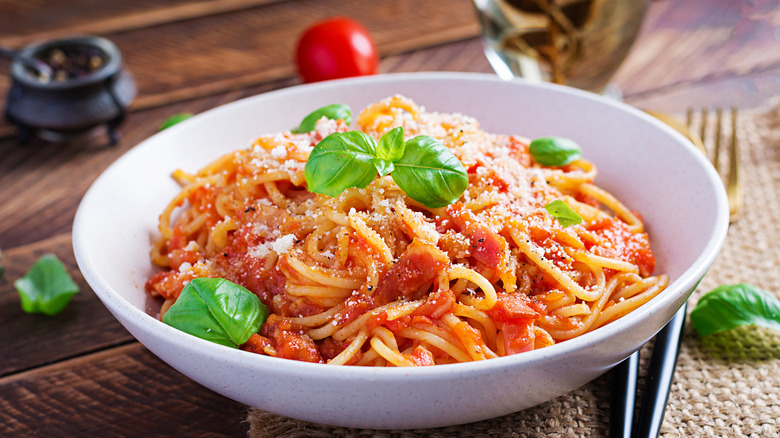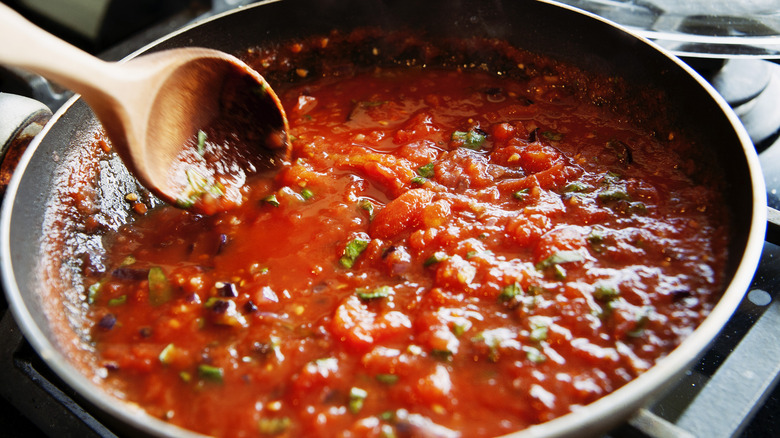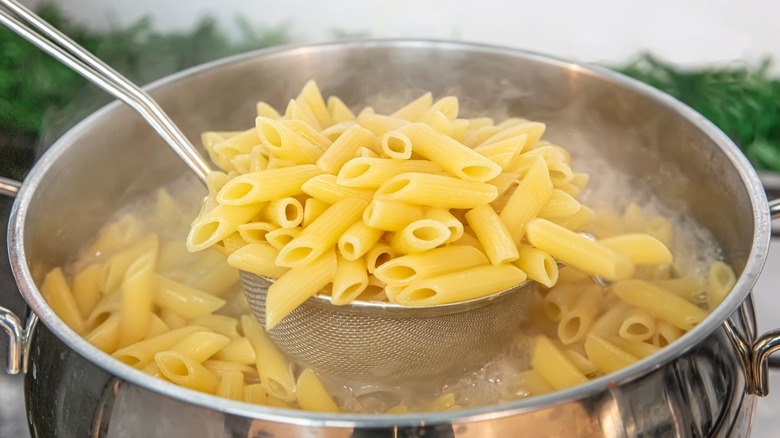What Exactly Is Sugo?
Whether you're a novice home chef or are quite adept in the kitchen, it's important to be in the know when it comes to cooking terms. Having an understanding of common terms can prevent a lot of confusion as you create delicious dishes for your friends and family. It can also help you avoid mistakes in the kitchen, which may render amazing recipes sadly unpalatable.
Land O'Lakes shares a few common cooking terms to enhance understanding and ensure excellence when preparing meals. For instance, blanching refers to a cooking technique where the chef submerges fruits or vegetables in boiling water briefly before placing them into a bowl of icy water. Then there's steaming, which entails cooking food over a pan of boiling liquid, or parboiling, which means boiling foods partially before finishing them off with another cooking method, such as frying or grilling.
As for Italian cooking terms, most people know that al dente refers to pasta that retains some firmness when cooking (al dente is translated to "to the tooth" in English according to Allrecipes). However, some Italian cooking terms are less well-known, which leads curious chefs to the internet for more information.
A simple yet tasty explanation for sugo
According to KSAT.com Google released its most searched food terms in 2022. Number one on the list is sugo, another Italian term with a surprisingly simple definition. Meaning "sauce" in English, sugo refers to a traditional red sauce consisting of tomatoes (of course), as well as basil, garlic, onions, and extra virgin olive oil. Other popular food-based search terms for last year include grinder sandwiches, "Marry Me Chicken," and green goddess salad, just to name a few.
As for sugo, The Food Channel dives a bit deeper into the popular sauce. Sugo is often made from juicy plum tomatoes, while the garlic and onions are typically roasted in olive oil to bring out their inherent flavors. Some chefs also add sugar to their red sauce, which balances out the acidity of the tomatoes according to Reader's Digest. If you're feeling feisty, you can even add a bit of red wine to the sauce to enhance flavors even further. Of course, a delectable sauce will only be wasted on lackluster pasta, which can be avoided when you use the best pasta practices.
How to perfect your pasta dishes
To ensure your pasta is just as pleasing as your sugo, Whole Foods Market offers a few helpful cooking tips. When it comes to achieving the perfect texture, make sure the water is at a full boil before adding your noodles to stop them from becoming gummy. Additionally, you should begin stirring the pasta immediately after it's added to the pot. You should also continue to stir it every few minutes or so to make sure each noodle cooks uniformly.
As for cooking time, you'll want to sample the pasta as you go to ensure proper doneness. The best pasta texture is somewhat spongy against the teeth, without being sticky. The cooking times listed on pasta boxes can be deceptive, so it's okay go with your gut. Once the pasta is cooked to your liking, never douse it in cold water or you run the risk of washing away the starch. This can impact how well the sauce sticks to the pasta, which means diners could be missing out on your delicious sugo. Speaking of which ... as delicious. points out, sugo is great on its own, but it can also be the starting point for many notable Italian sauces like arrabiata and amatriciana.


